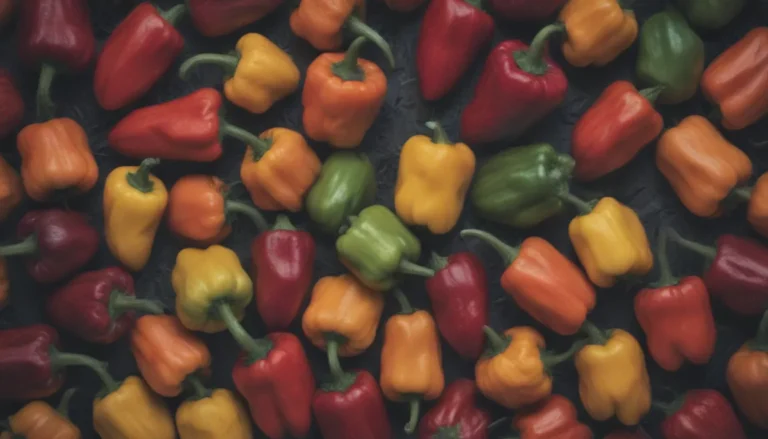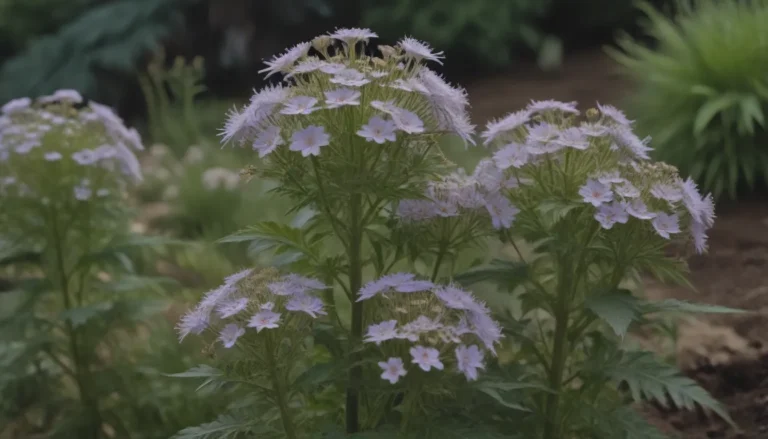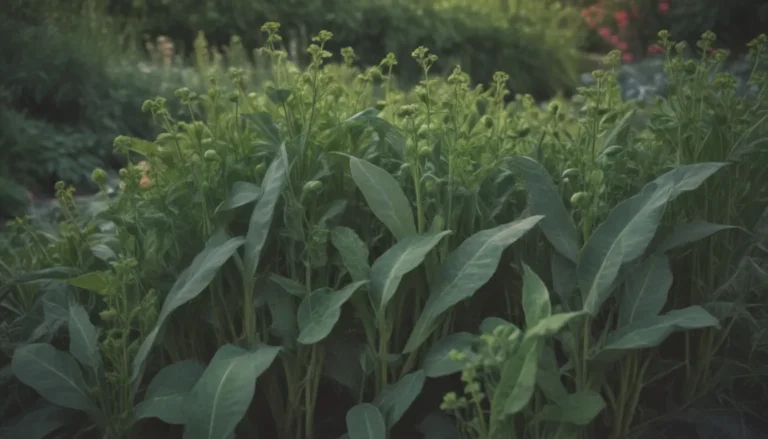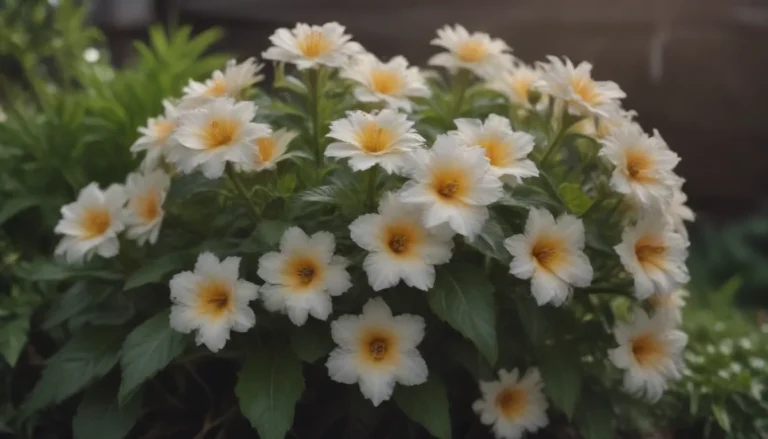The Ultimate Guide to Asparagus Companion Plants for a Bountiful Harvest
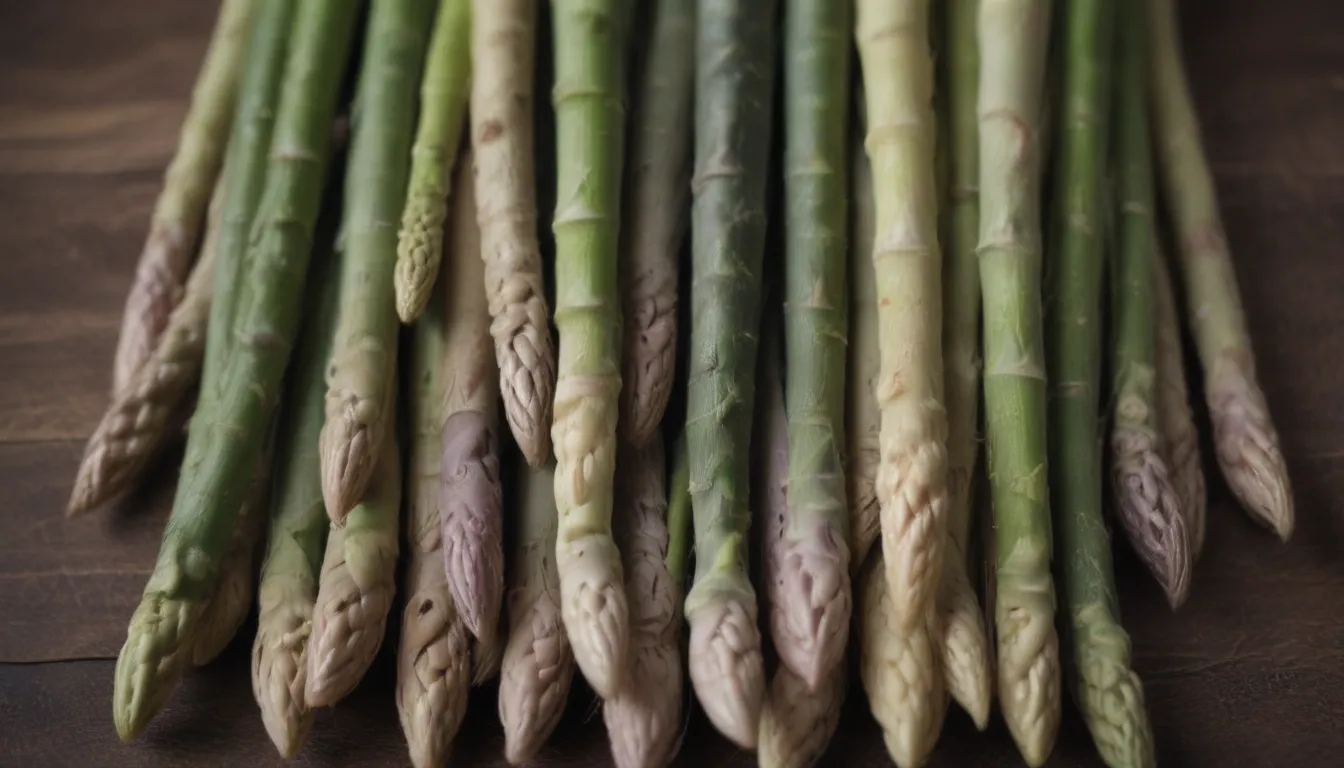
Asparagus, with its crisp and fresh taste, is a delightful addition to any meal. But did you know that the secret to growing thriving asparagus lies in planting the right companion plants alongside them? Companion planting is a gardening technique that involves pairing certain plants together to benefit one another’s growth and ward off pests. By strategically planting companion plants near your asparagus, you can boost their growth, improve their flavor, and protect them from harmful insects.
In this comprehensive guide, we’ll explore 12 of the best companion plants for asparagus that will help you achieve a perfect pairing in your garden. From basil and dill to strawberries and marigolds, these companion plants will not only enhance the health and flavor of your asparagus but also create a vibrant and diverse garden ecosystem. So, let’s dive in and discover how to take your asparagus gardening to the next level!
The Benefits of Companion Planting for Asparagus
Before we delve into the list of companion plants, it’s essential to understand the numerous benefits of companion planting for your asparagus garden:
- Repel Harmful Insects: Companion plants can help repel pests that may damage your asparagus plants, such as aphids, beetles, and nematodes.
- Prevent Weed Growth: Certain companion plants act as natural weed suppressors, keeping your garden bed free of unwanted vegetation.
- Add Nutrients to the Soil: Some companion plants contribute essential nutrients to the soil, promoting the healthy growth of your asparagus.
- Improve Flavor: Planting specific herbs and vegetables near your asparagus can enhance their flavor and overall taste.
By incorporating companion plants into your asparagus garden, you can create a harmonious and thriving environment that benefits all your plants. Now, let’s explore the 12 best companion plants for asparagus that will elevate your gardening experience.
1. Basil
USDA Hardiness Zones:
Light:
Soil:
Predatory wasps are attracted to basil plants, which can help eliminate common asparagus pests like aphids and beetles. Placing basil near your asparagus plants will create a natural defense system against harmful insects, ensuring the health and vitality of your crop.
2. Dill
USDA Hardiness Zones:
Light:
Soil:
Although dill attracts bugs, these insects are beneficial as they prey on pests that feed on asparagus. Lacewings and ladybugs are attracted to dill plants and can help control aphid populations, protecting your asparagus from damage.
3. Marigold
USDA Hardiness Zones:
Light:
Soil:
Marigolds not only add a splash of color to your garden but also serve as a natural repellent for asparagus pests such as aphids, whiteflies, and nematodes. Planting marigolds near your asparagus can help deter harmful insects and enhance the beauty of your garden.
4. Parsley
USDA Hardiness Zones:
Light:
Soil:
Adding parsley near your asparagus plants can not only boost their growth but also improve their flavor. Rich in nitrogen, parsley contributes essential nutrients to the soil, resulting in healthier and more flavorful asparagus harvests.
5. Strawberries
USDA Hardiness Zones:
Light:
Soil:
Strawberries make excellent companion plants for asparagus, providing ground cover that helps suppress weeds and retain soil moisture. By planting strawberries alongside your asparagus, you can create a beneficial environment for both crops to thrive.
6. Nasturtium
USDA Hardiness Zones:
Light:
Soil:
Nasturtiums not only add beauty to your garden with their vibrant colors but also help repel asparagus beetles with their fragrant scent. By including nasturtiums in your asparagus bed, you can protect your plants from common pests while enhancing the aesthetic appeal of your garden.
7. Peas
USDA Hardiness Zones:
Light:
Soil:
Peas serve as excellent companion plants for asparagus, helping maintain soil moisture levels ideal for asparagus growth. By planting peas near your asparagus, you can create a balanced ecosystem that benefits both crops.
Tip:
While peas are beneficial companion plants for asparagus, it’s essential to note that not all legumes are suitable. Beans, also legumes, are not recommended to be planted near asparagus.
8. Eggplant
USDA Hardiness Zones:
Light:
Soil:
Eggplants and asparagus make for an excellent pairing in the garden. While these two vegetables have different nutrient requirements, they complement each other as companion plants. Asparagus can help repel nematodes that may harm eggplants, creating a mutually beneficial relationship.
9. Tomato
USDA Hardiness Zones:
Light:
Soil:
Tomatoes and asparagus are natural allies in the garden, as they can defend each other against common pests. Tomatoes repel asparagus beetles, while asparagus helps deter nematodes that can damage tomato plants. By planting tomatoes near your asparagus, you can create a robust pest management system for both crops.
10. Lettuce
USDA Hardiness Zones:
Light:
Soil:
Lettuce thrives in cooler temperatures compared to asparagus, making them suitable companion plants. Asparagus’s tall stature can provide shade for low-growing lettuce, helping it stay cool in hot weather. Additionally, lettuce serves as a natural ground cover, preserving soil moisture and insulating the root system.
11. Spinach
USDA Hardiness Zones:
Light:
Soil:
Spinach’s neat growth habit and non-competitive nature make it an ideal companion plant for asparagus. By planting spinach alongside your asparagus, you can create a harmonious garden bed where both plants can thrive without competing for nutrients.
12. Cilantro
USDA Hardiness Zones:
Light:
Soil:
Cilantro and asparagus complement each other well in the garden, with cilantro’s shallow roots and low profile harmonizing with asparagus’s deep root system. Cilantro’s flowers also attract beneficial insects that can help protect your asparagus plants from pests.
What Not to Plant With Asparagus
While companion planting can offer numerous benefits for your asparagus garden, there are certain plants that you should avoid planting near them. Alliums, beans, and potatoes are not recommended as companion plants for asparagus, as they may compete for nutrients or attract pests that could harm your crop.
To ensure the health and vitality of your asparagus bed, consider applying compost manure in late fall or late spring. A balanced fertilizer with a ratio of 10-10-10 (containing 10% nitrogen, 10% phosphorus, and 10% potassium) can provide essential nutrients for your plants. While coffee grounds are acidic and not ideal for asparagus, they can be incorporated into a compost mixture for added benefits.
Conclusion
Incorporating companion plants into your asparagus garden can have a significant impact on the health, growth, and flavor of your crop. By choosing the right companion plants, you can create a thriving ecosystem that supports the well-being of your plants and enhances the beauty of your garden.
Whether you opt for basil to attract predatory wasps, dill to control aphids, or strawberries for ground cover, each companion plant plays a vital role in creating a balanced and productive garden. Experiment with different combinations of companion plants to discover the perfect pairing for your asparagus and unlock the full potential of your garden.
For more information on companion planting and asparagus gardening, check out the resources below:
- Companion Planting
- Botanical Pesticides
- African Blue Basil: A Pollinator Favorite
- Aphid Parasitoids
- Asparagus Beetles
- Herbs Attract Beneficial Insects
- Companion planting with French marigolds protects tomato plants
- Nutritional Value of Parsley Roots
- What Can I Do About Nematodes?
- Growing asparagus in home gardens
By incorporating these tips and resources into your gardening practices, you can create a flourishing and bountiful asparagus garden that will delight your taste buds and nourish your body. Happy gardening!
